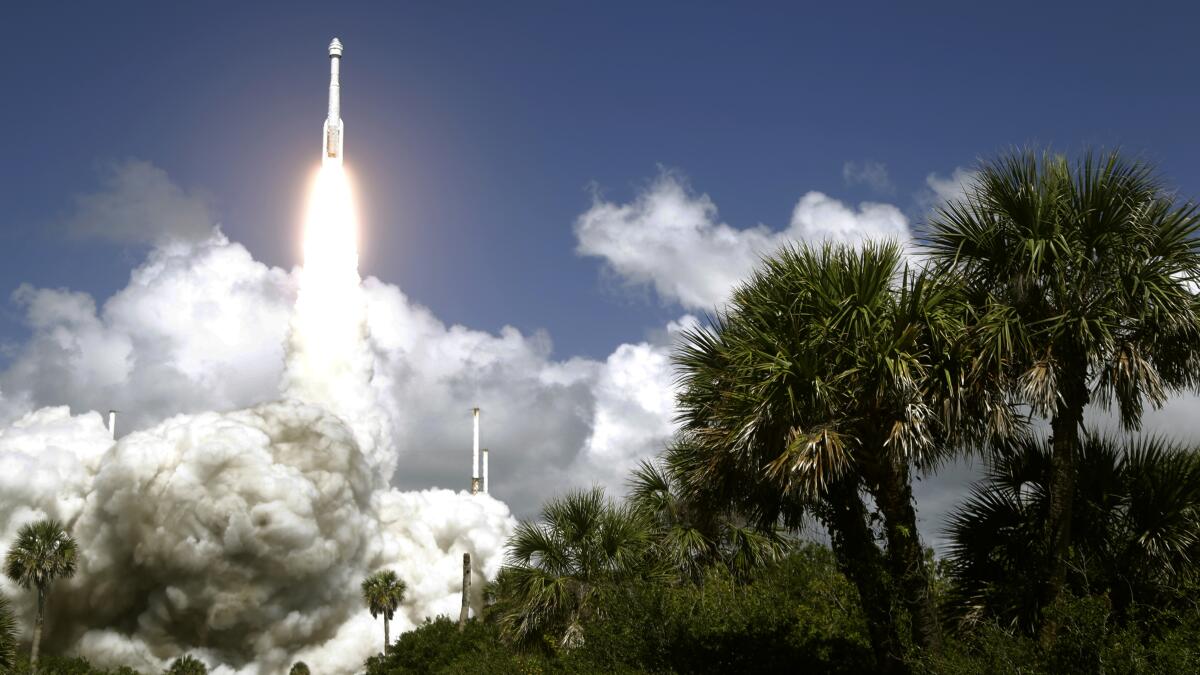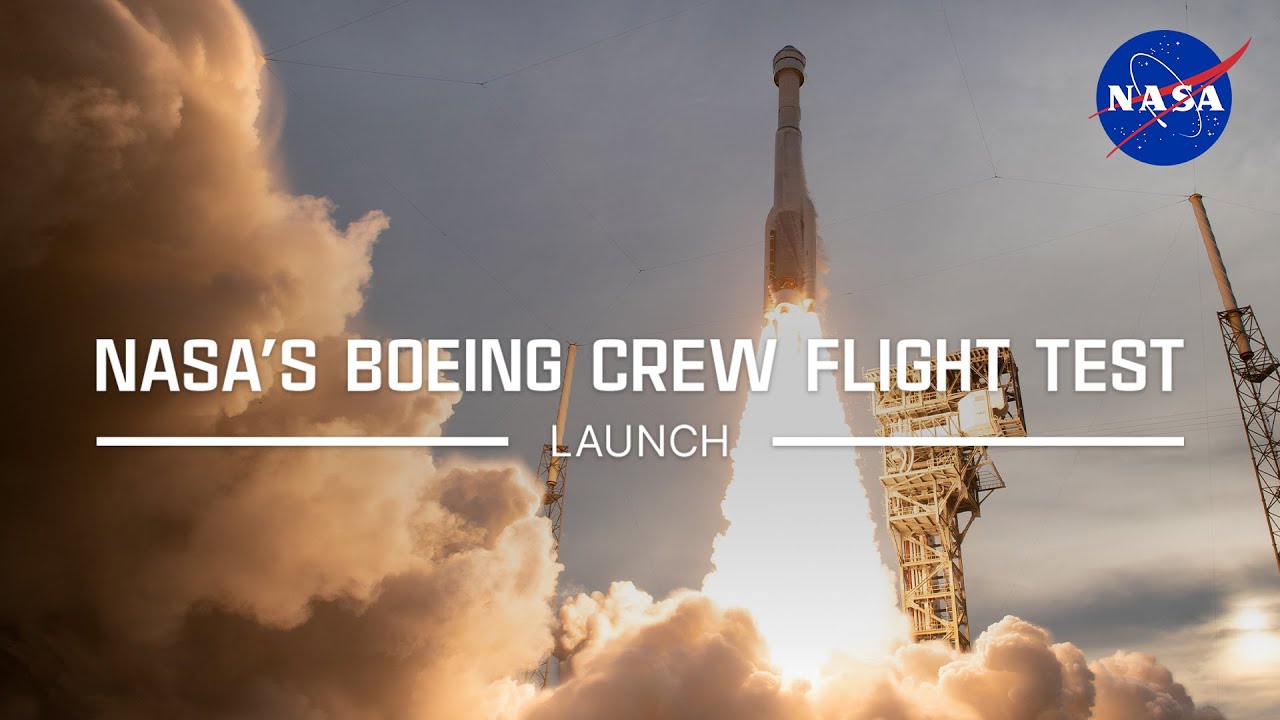NASA’s Role in Boeing Starliner Launch: Nasa, Boeing Starliner Launch

NASA has been instrumental in the development and launch of the Boeing Starliner spacecraft. The agency provided funding for the spacecraft’s development and is responsible for overseeing its safety and performance. NASA’s mission objectives for the Starliner include transporting astronauts and cargo to the International Space Station (ISS) and conducting scientific research in low Earth orbit.
The agency has worked closely with Boeing to prepare for the Starliner’s launch. NASA has provided technical expertise and support to Boeing’s engineers and has conducted extensive testing to ensure the spacecraft is safe and reliable. NASA is also responsible for certifying the Starliner for human spaceflight.
Collaboration with Boeing
NASA and Boeing have collaborated closely to prepare for the Starliner’s launch. The two organizations have worked together to develop the spacecraft’s design, build its hardware, and test its systems. NASA has also provided training to Boeing’s astronauts and ground crew.
The collaboration between NASA and Boeing has been essential to the success of the Starliner program. The two organizations have worked together to overcome technical challenges and ensure the spacecraft is safe and reliable for human spaceflight.
Technical Details of the Boeing Starliner Launch

Nasa, boeing starliner launch – The Boeing Starliner is a reusable spacecraft designed to transport crew and cargo to and from low Earth orbit (LEO). It is part of NASA’s Commercial Crew Program, which aims to develop commercial spacecraft to ferry astronauts to the International Space Station (ISS).
The Starliner is a conical-shaped spacecraft with a diameter of 4.57 meters and a height of 5.03 meters. It has a mass of approximately 13 metric tons and can accommodate up to seven astronauts. The spacecraft is powered by a single Aerojet Rocketdyne RL10 engine, which provides 23,000 pounds of thrust. The Starliner also has a docking system that allows it to connect to the ISS.
The Starliner is launched into orbit using a United Launch Alliance (ULA) Atlas V rocket. The Atlas V is a two-stage rocket that uses kerosene and liquid oxygen as propellants. The first stage of the rocket provides 860,000 pounds of thrust, while the second stage provides 120,000 pounds of thrust. The Atlas V launches the Starliner into a low Earth orbit, where it will rendezvous with the ISS.
The Starliner is designed to stay in orbit for up to six months. During this time, it can be used to conduct experiments, perform maintenance on the ISS, or transport astronauts to and from the station.
Payload, Nasa, boeing starliner launch
The Starliner can carry a variety of payloads, including:
- Up to seven astronauts
- Cargo, such as food, supplies, and equipment
- Science experiments
Launch Sequence
The launch sequence for the Starliner is as follows:
- The Atlas V rocket lifts off from the launch pad.
- The first stage of the rocket burns for approximately two minutes and then separates from the second stage.
- The second stage of the rocket burns for approximately six minutes and then separates from the Starliner.
- The Starliner continues on its own power and enters low Earth orbit.
- The Starliner rendezvous with the ISS.
Impact and Significance of the Boeing Starliner Launch
The Boeing Starliner launch represents a significant milestone in the realm of commercial space exploration. This mission not only marks the return of human spaceflight capabilities to the United States but also ushers in a new era of scientific and technological advancements.
The Starliner’s primary mission is to transport astronauts and cargo to the International Space Station (ISS). This capability will enable the expansion of scientific research conducted in space, leading to advancements in fields such as medicine, materials science, and astrophysics. Additionally, the Starliner’s reusable design significantly reduces the cost of space travel, making it more accessible for both commercial and government entities.
Scientific and Technological Advancements
The Starliner launch will facilitate the conduct of cutting-edge scientific research in microgravity. Experiments conducted aboard the ISS will provide valuable insights into the effects of space on the human body, pave the way for the development of new medical treatments, and enhance our understanding of the fundamental laws of physics.
Furthermore, the Starliner’s advanced avionics and navigation systems will contribute to the development of more efficient and autonomous spacecraft. These advancements will not only enhance the safety and reliability of future space missions but also enable the exploration of more distant destinations in our solar system.
Implications for Future Space Missions and Human Spaceflight
The success of the Starliner launch will pave the way for future crewed missions to the Moon and Mars. The spacecraft’s ability to transport astronauts and cargo to and from the ISS will provide valuable experience and data for the development of more advanced spacecraft capable of undertaking these ambitious journeys.
Moreover, the Starliner’s reusability will significantly reduce the cost of future space missions, making them more feasible for both government and commercial entities. This cost reduction will enable a wider range of scientific research, exploration, and commercial activities in space.
With anticipation building for NASA and Boeing’s upcoming Starliner launch, fans are also eagerly awaiting the release of the highly anticipated series, “The Acolyte.” What time is the Acolyte coming out ? The wait is almost over as the series is set to premiere soon, promising an immersive and thrilling journey into the Star Wars universe.
As the countdown to both the Starliner launch and the Acolyte’s debut continues, excitement fills the air.
The NASA and Boeing Starliner launch, a significant milestone in space exploration, has captured the attention of many. While we eagerly await the outcome of this mission, let’s take a moment to discuss another topic that has been generating buzz: acolyte rotten tomatoes.
The upcoming television series “Acolyte” has garnered a lot of interest, and its Rotten Tomatoes score will undoubtedly influence its reception. Returning to the Starliner launch, we can only hope for a successful mission that will pave the way for future space endeavors.
NASA’s recent Boeing Starliner launch marks a significant milestone in space exploration. The mission, led by astronaut Dean-Charles Chapman , demonstrates the advancement of human spaceflight and paves the way for future endeavors. As the Starliner continues its journey, we eagerly anticipate the groundbreaking discoveries and scientific advancements that this mission will bring.
The recent launch of NASA’s Boeing Starliner marked a significant milestone in space exploration. However, this triumph was tempered by the ongoing controversy surrounding Amanda Knox , the American student who was wrongly convicted of murder in Italy. Her case highlights the complexities of justice and the importance of due process.
As NASA and Boeing continue their journey to the stars, it is crucial that we also strive for a society where justice prevails and innocence is protected.
The recent launch of the NASA and Boeing Starliner mission marked a significant milestone in space exploration. Amidst the excitement, the tragic news of Mandisa’s untimely passing cast a shadow over the celebration. As we mourn her loss, we must also acknowledge the unwavering determination of those who continue to push the boundaries of human endeavor, like the crew of the Starliner mission, who embark on a journey to advance our understanding of the cosmos.